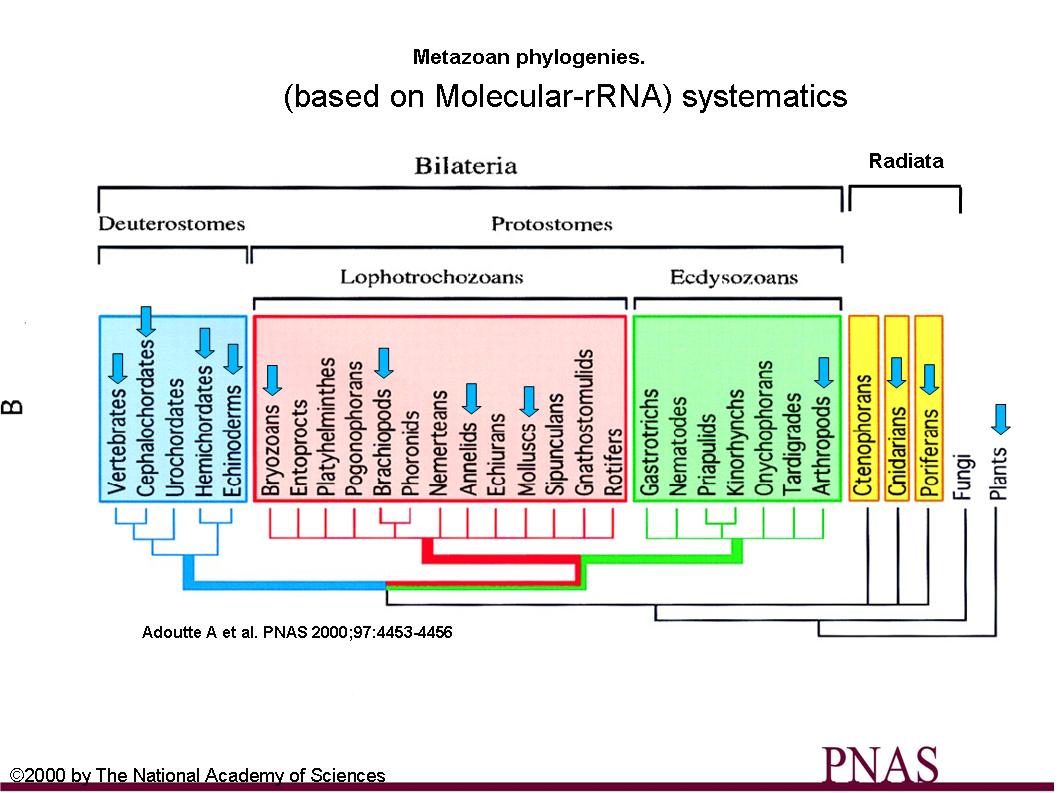Invertebrate Paleontology Lab
Lab 1: Classification and Preservation
Part I: Classification
Important Aspects of Classification to Know
1. We follow the Binomial Classification System developed by Carl Linne (1707-1778), (latinized name is Carolus Linneus), a system which assigns an organism to a genus and a species, always written with the genus capitalized and underlined or italicized, and the species always in lower case letters, and underlined or italicized. Formally, this is followed by the name of the person who first described the species and the year it was described. For example...
Genus species author year
Abra cadabra Earnes & Wilkins, 1957 (a pelecypod)
Lalapa lusa Pate, 1947 (a wasp)
Mozartella beethoveni Girault, 1926 (another wasp)
Kamera lens Woodcock, 1917 (a protist)Often this formal listing is shortened to just the genus and species, and even shortened to an abreviated name, such as A. cadabra or L. lusa. The genus and species fit into a hierarchical classification we use, also devised by Linneus that you may be familiar with: if not, please learn it now.
Kingdom
Phylum
Class
Order
Family
Genus
SpeciesWithin the Kingdom Animalia, we will be studying several large subgroups of invertebrates called Phyla (singular = Phylum), and typically we will study them to the level of the Class or Order. We will focus on a few groups at the lower level of genus and species when we look at some important Guide or Index Fossils.
How are these Phyla Related to Each Other?
Many workers have studied this question for centuries, with the major breakthroughs coming in the latter half of the 20th century and in these first few years of the 21st century. Methods have included functional morphology, comparative anatomy, cladistics, electron microscopy, evolutionary development (evo devo), and most recently molecular systematics using ribosomal RNA. Here, we follow the current phylogenetic model presented in standard invertebrate zoology and biology textbooks describing the relatedness and increasing complexity seen in the invertebrate groups drawn from the knowledge from the areas listed above. The model is shown below from Adoutte et al. (2000) in the Proceedings of the National Academy, with the phyla marked by a blue arrow that will discussed in this course (because they are easily fossilized). This model will be the basis for our exploration of the fossil record throughout the semester.
2. In-Class Assignment
How do we Classify? A group assignment. 20 points
Each group will examine an assigned tray of objects and create a hierarchical classification scheme. Consider: are there "natural" breaks among these groups of objects that can be identified? Which differences or similarities are more important than others? How detailed can you make your classification? Together, draw up a model of your classification scheme. We will present and discuss each of these schemes in class. Sign your names to your group model, and turn it in at the end of class.
Part II: Preservation
1. Here are some terms we will be using today regarding preservation. You will become familiar with these as the semester proceeds, and also you can read about them in Chapter 3 of Benton & Harper, your textbook.Unaltered Remains
Permineralization
Recrystallization
Dissolution & Replacement
Carbonization
Taphonomy
Lagerstätten
2. Preservation
Group assignment: 20 pointsFossil Preservation, 20 points The specimens 1-5 represent a collection of objects, some of which are fossils, some not. Evaluate each specimen in the tray assigned to your group. Then, record the information below. Your description should be detailed enough for me to know what you are looking at.
Names in Your Group: _______________________________________________________________________________________________________
__________________________________________________________________________________________________________________________
Specimen- What is it?
Is it a Fossil?
Preservation Type
General Description
